1. 기제 성분
Caffeine anhydrous
Green tea extract EGCG
Synephrine
Pure Guggulsterones E&Z
Sclareolide
Yohimbine
Vinpocetine
Bioperine
2. 각 성분별 Comment
- Caffeine anhydrous
뭐 카페인이야 워낙 많이 지방 분해와 관련이 있다는 연구 결과가 많으니 생략 하겠다.
- Green tea extract EGCG
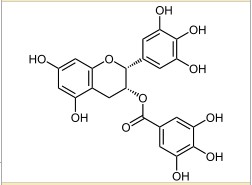
많은 건강 보충제에 종양(cancer), 동맥 경화증(atherosclerosis), blood sugar control, 인유두종 바이러스 감염(HPV virust infection), 퇴행성 신경 질환(neurodegenerative)을 위한 보충제로 들어가 있다. (참고로 유두종 바이러스의 경우 악성 Type의 경우에 자궁암을 유발 할수 있다고 알려져 있다. ) 첨부 X는 Reference 2에서 나온 내용이다. 대부분 녹차의 유용성과 비슷하다고 볼수 있다.
Reference:
1. http://en.wikipedia.org/wiki/Epigallocatechin_gallate
2. http://www.raysahelian.com/egcg.html
- Synephrine
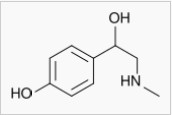
Synephrine은 Citrus aurantium이라는 열매에서 주로 얻어지며 Citus aurantium은 운향과 꽇으로 Bitter Orange로 불린다. 감귤류(Citrus)의 조그마한 나무이다. 뭐 중국에선는 Zhi-Shi로 명명된다.
주 작용으로: 지방 분해, 에너지 레벨 증가, 대사 증가, 체중 감소 등이 있으며
부 작용으로: Ephedrine과 비슷한 부작용으로 심장에 부정맥을 유발할수 있으며 혈압 상승, 체온 증가등을 유발 할수 있다. 하지만 Ephedrin에 비해서는 부작용이 심하지는 않다.
Reference:
1. http://en.wikipedia.org/wiki/Synephrine
- Pure Guggulsterones E&Z
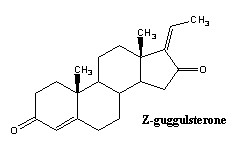
FXR은 활성화 되면 cholesterol 7 alpha-hydroxylase(CYP7A1)을 억제하는데 이 효소는 cholesterol에서 bile acid로의 합성을 촉진하는 주요 단계(rate-limiting)의 호르몬이다. Gugulsterone E&Z는 이런 FXR에 대한 반작용을 함으로 cholesterol의 bile acid로의 합성을 촉진하게 되어 cholesterol 수치가 감소되는 것으로 생각 된다.
References:
1. http://en.wikipedia.org/wiki/Guggulsterones
2. http://www.chemistry.org/portal/a/c/s/1/feature_pro.html?id=de9313b669c311d6ec554fd8fe800100
- Sclareolide
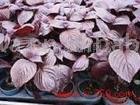
References:
1. http://waseta.en.alibaba.com/product/50381144/52294348/herbal_extract/Sclareolide.html
- Yohimbine
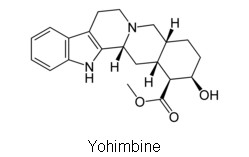
- Vinpocetine
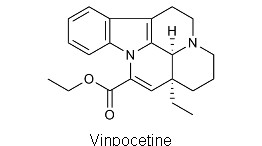
Phosphodiesterases I와 IV의 억제제이며 부작용으로 위장관계 장애, 심장박동 증가, 저혈압, 얼굴붉어짐, 두드러기 등이 드물게 나타난다고 보고 된다. 실제적으로 사람에게 이용되었을 경우 부작용은 없다고 한다.
References:
1. http://www.raysahelian.com/vinpocetine.html
2. http://en.wikipedia.org/wiki/Vinpocetine
- Bioperine
bioperine은 블랙페퍼(Peper nigrum)의 열매 추출물이다. thermogenesis라는 인체의 세포레벨의 에너지를 생성하는 대사를 항진하는 것으로 선전한다. 따라서 Bioperine을 Thermonutrient로 칭하기도 한다. 그리고 bioperine은 몇몇 영양소들의 습수를 촉진하는데 대표적인 시험 결과로 보이는 것은 beta-carotine에 대한 시험 결과 이다. placebo에 비해서 약 160%의 흡수 증가율이 보였다는 시험 결과 이다.
References:
1. http://www.bioperine.com/
3. 결론
결국 이 다이어트 약에서 위험한 성분은 Yohimbine> synephrine이다. 그 외에 물질들은 적은 용량에서는 몸의 기능 항진 정도의 효과를 나타낸다고 봐야 할것 같다. 카페인이야 워낙 커피나 녹차를 통해서 자주 마시니 제외하고 말이다. Synephrine의 경우 ephedrine에 비해서 부작용이 워낙 작다고 하고 용량도 그리 많지 않으니 문제 될것이 없다고 보고 Yohimbine도 부작용이 있다는게 분명하나 적은 용량에서는 체중 감소에 어느 정도 기여할수는 있다고 본다. 물론 체질과 몸의 상태에 따라 분명히 차이를 보일 것이고 중요한 것은 다이어트에 사용하는 이런 약물에 의존해서는 안된다는 것이다..뭐..워낙 원론적인 이야기라서 재미 없겠지만.
보충제를 무조건 거부할 필요는 없다. 중요한 것은 무조건 의지하거나 중독 되는 것보다는 운동과 규칙적인 식/생활 습관을 통해서 관리를 하고 여기에 도움이 될만한 보충제를 먹는 것이라고 생각 된다.
첨부
EGCG and Cancer
EGCG induces apoptosis in human cancer cell lines. EGCG inhibits telomerase and DNA methyltransferase, two enzymes involved in cancer gene expression and cellular immortality.
EGCG as an Antioxidant
EGCG's anti-oxidant action protects cells from lipid peroxidation and DNA damage induced by reactive free radicals.
EGCG and Leukemia
A component of green tea known as epigallocatechin-3-gallate (EGCG) [epi-gallo-cat-ekin-3-gal-ate] helps kill leukemia cells by interrupting the communication signals they need to survive.
EGCG and endothelial function in regards to heart disease
Acute EGCG Supplementation Reverses Endothelial Dysfunction in Patients with Coronary Artery Disease.J Am Coll Nutr. 2007 Apr;26(2):95-102. Widlansky ME, Hamburg NM, Anter E, Holbrook M, Kahn DF, Elliott JG, Keaney JF, Vita JA. Section of Cardiology, Boston Medical Center, 88 East Newton Street, Boston, MA.
We hypothesized that dietary supplementation with epigallocatechin gallate ( EGCG ), a major catechin in tea, would improve endothelial function in humans. We examined the effects of EGCG on endothelial function in a double blind, placebo-controlled, crossover design study. We measured brachial artery flow-mediated dilation by vascular ultrasound at six time points: prior to treatment with EGCG or placebo, two hours after an initial dose of EGCG (300 mg) or placebo, and after two weeks of treatment with EGCG (150 mg twice daily) or placebo. The order of treatments (EGCG or placebo) was randomized and there was a one-week washout period between treatments. RESULTS: A total of 42 subjects completed the study, and brachial artery flow-mediated dilation improved from 7 to 8.6 two hours after the first dose of 300 mg of EGCG, but was similar to baseline (7.8) after two weeks of treatment with the final measurements made approximately 14 hours after the last dose. Placebo treatment had no significant effect, and there were no changes in reactive hyperemia or the response to sublingual nitroglycerin. The changes in vascular function paralleled plasma EGCG concentrations, which increased from 2.6 to 92 ng/ml after acute EGCG, but were unchanged from baseline after two weeks of treatment (3.4). CONCLUSION: EGCG acutely improves endothelial function in humans with coronary artery disease, and may account for a portion of the beneficial effects of flavonoid-rich food on endothelial function.
My comments: I am not sure how to interpret this study. It appears that there is improvement initially but then in the long run no overall major change was noted. Unless I am misinterpreting this study. Any statisticians out there who can help? My friend Lou Mancano, M.D., offered this opinion: "While I applaud their efforts, I think one should be cautious before we can draw conclusions from this EGCG study. Here are some limitations: One major one is that there were no clinical outcomes measured; second, there was an assumption that a response in a brachial artery would be replicated in a coronary artery (we know that different parts of our anatomy respond differently to supplements and medications); third, we shouldn't automatically conclude that higher blood flow is necessarily better (could flow velocity and dilatation induce plaque rupture, as we indirectly discovered with sublingual nifedipine 10 or 15 years ago?); fourth, we cannot make any sound recommendations on the optimal dose or frequency of EGCG use. I뭗 recommend waiting for more studies꿦specially something with measurable clinical outcomes. About the flow rate you asked about. Either that level of change is insignificant, or if it is, the fact that it was not sustained at 2 weeks renders it insignificant (possibly the body makes an adjustment - we all know our bodies (nature) is always smarter than the substances we place within it)."
EGCG and Alzheimer's Disease
Green tea epigallocatechin-3-gallate (EGCG) modulates amyloid precursor protein cleavage and reduces cerebral amyloidosis in Alzheimer transgenic mice.J Neurosci. 2005 Sep 21;25(38):8807-14. Silver Child Development Center, Department of Psychiatry and Behavioral Medicine, University of South Florida, Tampa, Florida
Alzheimer's disease (AD) is a progressive neurodegenerative disorder pathologically characterized by deposition of beta-amyloid (Abeta) peptides as senile plaques in the brain. Recent studies suggest that green tea flavonoids may be used for the prevention and treatment of a variety of neurodegenerative diseases. Here, we report that EGCG, the main polyphenolic constituent of green tea, reduces Abeta generation in both murine neuron-like cells (N2a) transfected with the human "Swedish" mutant amyloid precursor protein (APP) and in primary neurons derived from Swedish mutant APP-overexpressing mice (Tg APPsw line 2576). In concert with these observations, we find that EGCG markedly promotes cleavage of the alpha-C-terminal fragment of APP and elevates the N-terminal APP cleavage product, soluble APP-alpha. These cleavage events are associated with elevated alpha-secretase activity and enhanced hydrolysis of tumor necrosis factor alpha-converting enzyme, a primary candidate alpha-secretase. As a validation of these findings in vivo, we treated Tg APPsw transgenic mice overproducing Abeta with EGCG and found decreased Abeta levels and plaques associated with promotion of the nonamyloidogenic alpha-secretase proteolytic pathway. These data raise the possibility that EGCG dietary supplementation may provide effective prophylaxis for AD.
EGCG and Weight Loss
The big boys are on it now. Enviga, a sparkling green tea containing green tea extracts, calcium, and caffeine was conceived by Beverage Partners Worldwide (BPW) -- a joint venture of Nestle S.A. and The Coca-Cola Company. "Enviga increases calorie burning. It represents the perfect partnership of science and nature," said Dr. Rhona Applebaum, chief scientist, The Coca- Cola Company. "Enviga contains the optimum blend of green tea extracts ( EGCG ), caffeine and naturally active plant micronutrients designed to work with your body to increase calorie burning, thus creating a negative calorie effect. It makes this product stand out as unique. Enviga brings the benefits of green tea to the forefront in a convenient and accessible, great tasting beverage." The Nestle Research Center in Lausanne, Switzerland, has studied the properties and benefits of green tea for decades as part of its extensive global tea business. A recent study conducted by the Center in collaboration with the University of Lausanne revealed that consuming the equivalent of three Enviga beverages over the course of the day resulted in a noticeable increase in calorie burning. "The accumulated body of scientific research shows the ability of green tea's powerful antioxidant EGCGto speed up metabolism and increase energy use, especially when combined with caffeine," said Nestle researcher Dr. Hilary Green. Studies have shown that when EGCG and caffeine are present at the levels comparable to that in three cans of Enviga, healthy subjects in the lean to normal weight range can experience an average increase in calorie burning by 60 - 100 calories. EGCG is a naturally occurring antioxidant in tea, including green tea. Enviga provides 90 mg of EGCG in each serving. "We've seen a shift in consumers' attitudes toward diet and health and wellness, with more consumers seeking product choices that support active lifestyles, rather than dieting," said John Hackett, senior vice president, Coca-Cola North America Marketing. "Enviga is a great tasting beverage that invigorates your metabolism to gently burn calories, and it's a positive step people can take as part of a balanced lifestyle -- like taking the stairs." Enviga will be available in three delicious flavors -- green tea, berry and peach -- in the ready-to-drink tea section at supermarkets, mass merchandisers, convenience and drug stores, and club stores. Enviga will be sold in individual 12-ounce sleek cans as well as six-can and 12-can multi-packs. Suggested retail price for Enviga will be $1.29 - $1.49 (single can). "Enviga brings together Nestle's expertise in nutritional science and extensive knowledge in the benefits of green tea with Coca-Cola's consumer, marketing and distribution resources to create a new global beverage category with unique consumer benefits -- a beverage with negative calories," said Leslie Novos, CEO of Beverage Partners Worldwide.
Dr. Sahelian says: I think it is premature to make the claim that ingesting Enviga leads to long term weight loss. I am concerned about the overstimulation of heart muscle when so much green tea and caffeine are ingested in Enviga. It is possible that many people will continue drinking their coffee throughout the day while ingesting one or more cans of Enviga, hence potentially increasing their blood pressure and causing heart problems.
Effect of long-term oral administration of green tea extract on weight gain and glucose tolerance in Zucker diabetic (ZDF) rats.J Herb Pharmacother. 2005;5(3):55-65.Botanical Center in Vivo Care, 700 West State St, West Lafayette, IN, 47907, USA.
There have been some claims that green tea reduces weight and lowers blood glucose in diabetes. Intraperitoneal injections of green tea catechins in diabetic rats have shown beneficial effects. To determine if oral administration of green tea would prevent development of diabetes, young Zucker diabetic rats were dosed with green tea extract containing 50-125 mg/kg of EGCG starting at 7 weeks of age, before the appearance of excessive weight gain and glucose elevation. While there was a trend toward lower weight gain and average daily glucose, there was no statistically significant difference.
EGCG and Caffeine Combination
Effects of encapsulated green tea and Guarana extracts containing a mixture of epigallocatechin-3-gallate and caffeine on 24 h energy expenditure and fat oxidation in men.Br J Nutr. 2005 Sep;94(3):432-6. Division of Kinesiology, Laval University, Ste-Foy, Quebec, Canada, G1K 7P4.
It has been reported that green tea has a thermogenic effect, due to its caffeine content and probably also to the catechin, EGCG. The main aim of the present study was to compare the effect of a mixture of green tea and Guarana extracts containing a fixed dose of caffeine and variable doses of EGCG on 24 h energy expenditure and fat oxidation. Fourteen subjects took part to this randomized, placebo-controlled, double-blind, cross-over study. Each subject was tested five times in a metabolic chamber to measure 24 h energy expenditure, substrate oxidation and blood pressure. During each stay, the subjects ingested a capsule of placebo or capsules containing 200 mg caffeine and a variable dose of EGCG (90, 200, 300 or 400 mg) three times daily, 30 min before standardized meals. Twenty-four hour energy expenditure increased significantly by about 750 kJ with all EGCG caffeine mixtures compared with placebo. No effect of the EGCG caffeine mixture was observed for lipid oxidation. Systolic and diastolic blood pressure increased by about 7 and 5 mmHg, respectively, with the EGCG caffeine mixtures compared with placebo. This increase was significant only for 24 h diastolic blood pressure. The main finding of the study was the increase in 24 h energy expenditure with the EGCG caffeine mixtures. However, this increase was similar with all doses of EGCG in the mixtures.
EGCG and Diabetes
A rodent study shows EGCG to have promise as a remedy for diabetes.
Epigallocatechin gallate supplementation alleviates diabetes in rodents.J Nutr. 2006 Oct;136(10):2512-8. DSM Nutritional Products Ltd, Department of Human Nutrition and Health, CH-4002 Basel, Switzerland.
This study investigated the antidiabetic effects of the most abundant green tea catechin, epigallocatechin gallate ( EGCG, TEAVIGO ), in rodent models of type 2 diabetes mellitus and H4IIE rat hepatoma cells. We assessed glucose and insulin tolerance in db/db mice and ZDF rats after they ingested EGCG. Using gene microarray and real-time quantitative RT-PCR we investigated the effect of EGCG on gene expression in H4IIE rat hepatoma cells as well as in liver and adipose tissue of db/db mice. EGCG improved oral glucose tolerance and blood glucose in food-deprived rats in a dose-dependent manner. Plasma concentrations of triacylglycerol were reduced and glucose-stimulated insulin secretion was enhanced. In H4IIE cells, EGCG downregulated genes involved in gluconeogenesis and the synthesis of fatty acids, triacylgycerol, and cholesterol. EGCG decreased the mRNA expression of phosphoenolpyruvate carboxykinase in H4IIE cells as well as in liver and adipose tissue of db/db mice. Glucokinase mRNA expression was upregulated in the liver of db/db mice in a dose-dependent manner. This study shows that EGCG beneficially modifies glucose and lipid metabolism in H4IIE cells and markedly enhances glucose tolerance in diabetic rodents. Dietary supplementation with EGCG could potentially contribute to nutritional strategies for the prevention and treatment of type 2 diabetes mellitus.
EGCG for Human Papilloma Virus
Protective effects of green tea extracts (polyphenon E and EGCG) on human cervical lesions.Eur J Cancer Prev. 2003 Oct;12(5):383-90. Department of Obstetrics and Gynaecology, College of Medicine, The Catholic University of Korea, Seoul, Korea.
We investigated clinical efficacy of green tea extracts (polyphenon E; poly E and (-)-epigallocatechin-3-gallate [ EGCG ]) delivered in a form of ointment or capsule in patients with human papilloma virus (HPV) infected cervical lesions. Fifty-one patients with cervical lesions (chronic cervicitis, mild dysplasia, moderate dysplasia and severe dysplasia) were divided into four groups, as compared with 39 untreated patients as a control. Poly E ointment was applied locally to 27 patients twice a week. For oral delivery, a 200 mg of poly E or EGCG capsule was taken orally every day for eight to 12 weeks. In the study, 20 out of 27 patients (74%) under poly E ointment therapy showed a response. Six out of eight patients under poly E ointment plus poly E capsule therapy (75%) showed a response, and three out of six patients (50%) under poly E capsule therapy showed a response. Six out of 10 patients (60%) under EGCG capsule therapy showed a response. Overall, a 69% response rate (35/51) was noted for treatment with green tea extracts, as compared with a 10% response rate (4/39) in untreated controls (P<0.05). Thus, the data collected here demonstrated that green tea extracts in a form of ointment and capsule are effective for treating cervical lesions, suggesting that green tea extracts can be a potential therapy regimen for patients with HPV infected cervical lesions.
EGCG content in Cup of Green Tea
I am estimating, based on the study listed below, that the amount of EGCG or catechins found in a cup of green tea averages to about 100 mg. This is a rough estimate.
Total phenol, catechin, and caffeine contents of teas commonly consumed in the United kingdom.J Agric Food Chem. 2002 Jan 30;50(3):565-70. Khokhar S, Magnusdottir SG. Procter Department of Food Science, University of Leeds, Leeds LS2 9JT, United Kingdom.
Levels of total phenol, catechins, and caffeine in teas commonly consumed in the United Kingdom have been determined using reversed phase high-performance liquid chromatography. Tea bags or tea leaves were purchased from local supermarkets and extracted in boiling water for 5 min. The resulting data showed considerable variability in both total phenols [80-134 mg/g of dry matter (DM) in black teas and 87-106 mg/g of DM in green teas] and catechins (5-47, 51-84, and 8-13 mg/g of DM in black, green, and fruit teas, respectively); this was most probably a result of differing agronomic conditions, leaf age, and storage during and after transport, as well as the degree of fermentation. Caffeine contents of black teas (22-28 mg/g of DM) were significantly higher than in less fermented green teas (11-20 mg/g of DM). The relative concentration of the five major tea catechins ranked EGCG > ECG > EC > EGC > C. The estimated U.K. dietary intakes of total tea catechins, calculated on the basis of an average tea consumption of three cups of tea (200 mL cup, 1% tea leaves w/v), were 61, 92, and 405 mg/day from fruit teas, black teas, and green teas, respectively. The calculated caffeine intake ranged between 92 and 146 mg/day. In addition, many individuals will consume much larger quantities of tea, of various strengths (as determined by the brewing conditions employed).
EGCG oral dosage study
A single ascending dose study of epigallocatechin gallate in healthy volunteers.J Int Med Res. 2003 Mar-Apr;31(2):88-101. Roche Vitamins Ltd, Human Nutrition and Health, Research and Development, Basel, Switzerland.
This randomized, double-blind, placebo-controlled study assessed the safety, tolerability and plasma kinetic behaviour of single oral doses of 94% pure crystalline bulk EGCG under fasting conditions in 60 healthy male volunteers. In each group of 10 subjects, eight received oral EGCG in single doses of 50 mg, 100 mg, 200 mg, 400 mg, 800 mg or 1600 mg, and two received placebo. In each dosage group, the kinetic profile revealed rapid absorption with a one-peak plasma concentration versus time course, followed by a multiphasic decrease consisting of a distribution phase and an elimination phase. The mean AUC(0-infinity) of total EGCG varied between 442 and 10,368 ng.h/ml. The according mean Cmax values ranged from 130 to 3392 ng/ml and were observed after 1.3-2.2 h. The mean t1/2z values were seen between 1.9 and 4.6 h. Single oral doses of EGCG up to 1600 mg were safe and very well tolerated.
EGCG discussed in October, 2006 newsletter
"Enviga increases calorie burning. It represents the perfect partnership of science and nature," says Dr. Rhona Applebaum, chief scientist, The Coca- Cola Company. "Enviga contains the optimum blend of green tea extracts (EGCG), caffeine and naturally active plant micronutrients designed to work with your body to increase calorie burning, thus creating a negative calorie effect." The press release continues: "The accumulated body of scientific research shows the ability of green tea's powerful antioxidant EGCG to speed up metabolism and increase energy use, especially when combined with caffeine," adds Nestle researcher Dr. Hilary Green. Nestle is cooperating with Coca-Cola Company to promote this product.
Enviga will be available to the consumer in a few weeks. However, in many newspaper articles that followed the press release, health experts dismissed claims that Enviga would burn calories by speeding up the drinker's metabolic rate, and cast doubt on the chances it would help people lose weight.
My thoughts: Now that one of the largest companies in the US is heavily promoting green tea and EGCG, it is time to seriously evaluate the potential benefit and harm of overconsumption of green tea. I think it is premature to make the claim that ingesting Enviga leads to weight loss. The Coca Cola Company has not provided any direct research that indicates drinking several cans of this green tea and caffeine product is safe and effective in the long run, yet their press release makes quite promising statements. I am concerned about the overstimulation of heart muscle when so much green tea and caffeine are ingested, and the potential for irritability, anxiety, and insomnia. It is possible that many people will continue drinking their coffee throughout the day while ingesting one or more cans of Enviga, hence potentially increasing their blood pressure and causing heart problems.
EGCG, one of the beneficial substances in green tea, shows a lot of promise. In lab studies, the potential health benefits ascribed to green tea and EGCG include antioxidant effects, cancer chemoprevention, improving cardiovascular health, preventing fat formation, protecting the skin from the damage caused by ionizing radiation, and others. The compound EGCG has been shown to regulate dozens of disease-specific molecular targets. However, at this time, it is too early to say whether consuming large amounts of EGCG will provide more benefit than harm. There are countless beneficial substances in herbs and plant products that have been shown to have similar benefits. For instance, lycopene from tomatoes, curcumin from turmeric, resveratrol from grapes, genistein from soy, etc. How do we know whether taking a very high dose of a single substance is safe in the long run? Logic tells us that ingesting smaller amounts of many substances is healthier than taking a large dose of just one. Oranges are a healthy fruit. But, does it make sense to only eat several oranges a day and no other fruits? One would think that eating a variety of fruits would be a healthier option. Same with green tea and EGCG. I would recommend you avoid the temptation of taking too much of this beneficial substance until we have long term studies to indicate its safety. You may be better off just drinking an old fashioned cup of regular green tea or taking a green tea extract capsule.
EGCG Article written October 2006 for Today's Health and Wellness magazine
EGCG - In the future you're going to see these initials quite often. EGCG is short for epigallocatechin gallate, a substance found in certain herbs, particularly in green tea. You undoubtedly have heard of the many benefits of green tea. Does EGCG measure up to the claims you have heard or read?
Availability of EGCG
You can obtain EGCG through drinking green tea or taking a green tea extract supplement which lists the amount of EGCG per capsule. On average, a cup of green tea will have roughly 100 mg of EGCG per 8 ounces. The amount of EGCG present in green tea varies with different brands of the product, the region the green tea is grown, amount of brewing time, age of the green tea leaves, etc. A cup of green tea may have as much as 20 mg of caffeine.
Benefit of EGCG
There have been few human studies directly evaluating the green tea extract EGCG. However, laboratory and animal studies are plentiful. In lab studies, EGCG has been found to be a potent anti-antioxidant and to have anti-cancer abilities. In animal studies, EGCG has been found to potentially be helpful in blood sugar control. In human studies, EGCG has been shown to be helpful in reducing infection from the HPV virus in the cervix and the risk for prostate cancer.
EGCG for Cancer
EGCG induces apoptosis in human cancer cell lines. Apoptosis means the death of a cell, and in the case of a cancer cell, apoptosis is a good thing. In test tubes, EGCG thwarts the growth of several cancer cells including breast, prostate, lungs, ovaries, and liver.
Dr. Saverio Bettuzzi from the University of Parma in Italy gave men 600 mg a day of concentrated green tea catechins, containing 300 mg EGCG, or a placebo for a year. All the men had premalignant prostate cancer, putting them at risk of progression to full cancer. After a year, only one man (3%) in the group on green tea capsules developed prostate cancer compared with 9 men (28%) on placebo.
EGCG and Cervical Dysplasia with the HPV Virus
EGCG, when given to women with cervical dysplasia at a dose of 200 mg for a period of 12 weeks, showed a positive response. EGCG may be a potential therapy regimen for patients with HPV infected cervical lesions.
EGCG and Weight Loss
Research with EGCG and weigh loss in humans is still quite early, and at this time it appears that green tea and EGCG may help slightly with weight loss when used in high amounts, but long term benefit versus potential risk of high EGCG consumption has yet to be determined.
EGCG and Alzheimer's Disease
In rodent studies, EGCG is able to prevent the deposition of amyloid in brain tissue. Hence, it is possible that drinking green tea or taking an EGCG supplement could potentially reduce the risk for AD.
EGCG Summary
EGCG may have health benefit as a nutritional supplement for cancer, heart disease, certain viral infections, and neurodegenerative conditions, and perhaps weight loss. However, at this time we don't know the long term safety of taking a high dose EGCG supplement by itself. It is clear from epidemiological studies that long term drinking of green tea is safe and healthy as demonstrated in studies with Japanese green tea drinkers.